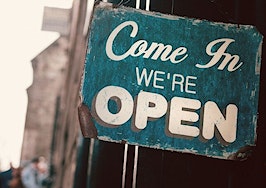Unacast believes it can predict the next Williamsburg.
A Norway-based data analytics company, Unacast focuses on tracking foot traffic. So, it knows when people are visiting certain neighborhoods more or less frequently. It can tell if shops and restaurants are rising or falling in popularity. And it can pull insights from that information, which business professionals can use to better hone their marketing efforts.
Unacast has long worked with companies in the advertising and marketing spaces. But today, the firm announced that it’s also moving into real estate with a new product called the “Neighborhood Data Package.”

Thomas Walle
“I think it’s going to be massive for us,” Unacast CEO and co-founder Thomas Walle told Inman of the decision to offer a real estate data product.
Walle first started thinking up the idea of Unacast while working at Tidal, the music streaming service that rapper Jay-Z bought in 2015. At the time, Tidal could see what music users listened to and then make related suggestions. Walle thought it would be useful if companies could do something similar with the way people physically move around a city.
So he co-founded Unacast in 2014.
“Our goal is to understand how people move around on this planet,” Walle explained of the goal.
Unacast works by gathering data from a variety of third-party smartphone apps. Those apps show which locations people have visited, and Walle said his company can consequently figure out if, for example, the local Whole Foods is doing more or less business.
Or it could pinpoint which neighborhoods are rising in popularity, theoretically allowing it to identify areas — like Williamsburg in Brooklyn — that will become destinations for the young and hip.
Walle said that Unacast currently gets data on 130 million monthly active users.
The take away for real estate professionals, then, is that they can use Unacast’s data to better advise clients. The data could also be used to guide investment or development decisions.
“From an investment perspective it’s extremely interesting data,” Walle added.
In an example illustrating the data’s use, Unacast compared downtown Los Angeles with two neighborhoods in New York City. The data showed that downtown L.A. received more visitors than the other two neighborhoods, and that most of the people headed into that area were workers and people from within California (as opposed to tourists).

Credit: Unacast
Such insights could theoretically help guide marketing decisions — advertising to local workers is different than advertising to tourists — and Walle said that Unacast offers a high level of granularity so that it can focus on very specific locations.
The Neighborhood Data Package can take different forms depending on the needs of Unacast’s clients. The company can, for example, work with larger firms that ingest raw data and then produce their own insights. Or, it can provide data to smaller operators such as individual agents and small brokerages. Walle said that for smaller scale clients, Unacast produces actual reports that make sense of the data.
Though Wednesday marks the official announcement of the Neighborhood Data Package, Unacast has been “quietly” working with real estate companies for a couple of months now while refining its product, Walle said.
The Neighborhood Data Package is part of a larger product, called the Real World Graph, which Unacast describes as “an interconnected system of data sets that understands human mobility in the physical world.”
Walle said that so far Unacast has raised $30 million from investors, and that it plans to continue beefing up its ability to serve the real estate industry in the future.
“We are investing very hard right now,” he added.











